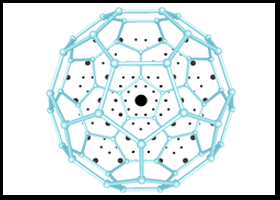Electron Diffraction and Structural Imaging
A special issue of Symmetry (ISSN 2073-8994). This special issue belongs to the section "Physics".
Deadline for manuscript submissions: closed (31 January 2022) | Viewed by 33268

Special Issue Editors
Interests: electron crystallography; precession electron diffraction; nano-materials; organic pharmaceuticals; cultural heritage materials
Special Issues, Collections and Topics in MDPI journals
Interests: electron microscopy; metallic nanostructures; metal-oxides and ferroelectrics; crystallography of interfaces
Special Issues, Collections and Topics in MDPI journals
Interests: electron crystallography; minerals; porous materials; nano-materials
Special Issues, Collections and Topics in MDPI journals
Interests: precession electron diffraction; electron crystallography; phase and orinentation mapping, strain mapping; cultural heritage material
Special Issues, Collections and Topics in MDPI journals
Special Issue Information
Dear Colleagues,
Over the last decade, electron diffraction (ED) and structural imaging have received renewed interest from the scientific community due to the advances in TEM instrumentation (Cs correctors, direct detection cameras, 4D STEM) and the introduction of new techniques, such as beam precession, 3D electron diffraction and ptychography. Thus, the atomic structural characterisation of various types of materials (functional materials, energy materials, zeolites, minerals, organic compounds, pharmaceuticals and proteins) has become possible at the nm scale.
In particular, ED requires a far lower energy dose when compared to conventional imaging techniques, and therefore allows for the investigation of very beam-sensitive materials. ED is nowadays used for the atomic structure determination of new compounds (down to 50 nm in size), for the acquisition of phase, orientation and strain mapping, for the determination of electric fields and for the study of amorphous materials, which otherwise could not be studied by laboratory X-ray or synchrotron methods. Moreover, the development of in situ sample holders (gas, liquid, heating, etc.) has allowed for the study of (bio-) materials under close-to-natural conditions and of real-time reactions.
All these novel applications rely on or strongly benefit from the intrinsic symmetry of condensed matter at the atomic scale. Conventional crystals belong to one of the possible 230 space groups in 3D space, while the description of incommensurate materials requires a more complex formalism based on 4 to 6 dimensions. Even 2D or amorphous systems rely on specific assumptions of symmetry. Dynamic crystalline and symmetry evolution and phase transformations are characterised by external stimuli using in situ microscopy methods. This is the reason why we proposed this Special Issue of Symmetry entitled “Electron Diffraction and Structural Imaging”.
In this context, we welcome contributions covering any aspect of ED, structural imaging and other related in situ techniques that make use of consolidated or advanced TEM instrumentation and have potential applications for a wide range of materials.
Dr. Partha Pratim Das
Dr. Arturo Ponce-Pedraza
Dr. Enrico Mugnaioli
Dr. Stavros Nicolopoulos
Guest Editors
Manuscript Submission Information
Manuscripts should be submitted online at www.mdpi.com by registering and logging in to this website. Once you are registered, click here to go to the submission form. Manuscripts can be submitted until the deadline. All submissions that pass pre-check are peer-reviewed. Accepted papers will be published continuously in the journal (as soon as accepted) and will be listed together on the special issue website. Research articles, review articles as well as short communications are invited. For planned papers, a title and short abstract (about 100 words) can be sent to the Editorial Office for announcement on this website.
Submitted manuscripts should not have been published previously, nor be under consideration for publication elsewhere (except conference proceedings papers). All manuscripts are thoroughly refereed through a single-blind peer-review process. A guide for authors and other relevant information for submission of manuscripts is available on the Instructions for Authors page. Symmetry is an international peer-reviewed open access monthly journal published by MDPI.
Please visit the Instructions for Authors page before submitting a manuscript. The Article Processing Charge (APC) for publication in this open access journal is 2400 CHF (Swiss Francs). Submitted papers should be well formatted and use good English. Authors may use MDPI's English editing service prior to publication or during author revisions.
Keywords
- nanomaterials
- electron diffraction
- 4D STEM
- serial ED
- 3D ED
- microED
- direct detection cameras
- ptychography
- in-situ
- atomic imaging
Benefits of Publishing in a Special Issue
- Ease of navigation: Grouping papers by topic helps scholars navigate broad scope journals more efficiently.
- Greater discoverability: Special Issues support the reach and impact of scientific research. Articles in Special Issues are more discoverable and cited more frequently.
- Expansion of research network: Special Issues facilitate connections among authors, fostering scientific collaborations.
- External promotion: Articles in Special Issues are often promoted through the journal's social media, increasing their visibility.
- e-Book format: Special Issues with more than 10 articles can be published as dedicated e-books, ensuring wide and rapid dissemination.
Further information on MDPI's Special Issue polices can be found here.








